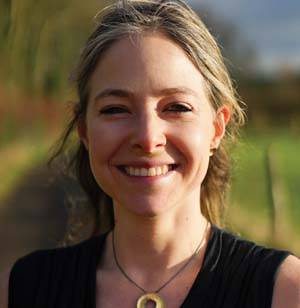This article is a preview from the Spring 2018 edition of New Humanist
You could fit the entire human race in the volume of a sugar cube. That’s because matter is mind-bogglingly empty. Probably, you have a picture in your mind of an atom, the fundamental Lego brick of all matter. Most likely, it is an image of a miniature Solar System, with a nucleus sitting at the centre like a sun around which electrons orbit like planets. Yet this image fails to convey the amount of empty space inside an atom. The playwright Tom Stoppard said it best: “Now make a fist, and, if your fist is as big as the nucleus of an atom, then the atom is as big as St Paul’s, and if it happens to be a hydrogen atom then it has a single electron flitting about like a moth in an empty cathedral, now by the dome, now by the altar.”
As a percentage, the amount of empty space in an atom is about 99.9999999999999 per cent. You are a ghost. I am a ghost. We are all ghosts. And, if you could squeeze all the empty space out of all the 7 billion people in the world the human race would indeed fit in the volume of a sugar cube – a very heavy sugar cube, mind you.
This is not mere theoretical fantasy. There are bodies in the universe whose atoms have had all the empty space squeezed out of them. Neutron stars are the endpoint of the evolution of very massive stars. When such a star blows its outer layers into space as a supernova, its core implodes. (In fact, it is the implosion that is believed to drive the explosion.) The resulting neutron star is about the size of Mount Everest but contains about the mass of the Sun. And, if you could travel to a neutron star, and dig out a chunk the size of a sugar cube, it would indeed weigh as much as the human race.
The reason why atoms are so empty is down to quantum theory. This is our very best description of the microscopic world of atoms and their constituents. It is fantastically successful. It has given us lasers and computers and nuclear reactors. It explains why the sun shines and why the ground beneath your feet is solid. But in addition to being a fantastic recipe for building things and for predicting things, quantum theory provides a unique window on an Alice in Wonderland world that exists beneath the skin of our perceived reality.
It is a place where a single atom can be in two places at once – the equivalent of you being in London and New York at the same time. Where things happen for absolutely no reason at all and where two atoms can influence each other instantaneously even if on opposite sides of the universe.
All this quantum insanity stems from a simple observational fact: the fundamental building blocks of matter have a weird dual nature. They can behave as localised particles like tiny billiard balls and they can behave as spread-out waves like ripples spreading on a pond. Don’t even try to imagine how this can be. It is impossible. The truth is that the electrons and photons and so on that make up the world are neither particles nor waves but something for which we have nothing to compare them with in the everyday world, and for which we have no word in our vocabulary.
Like an object we can never see directly but can know only from the shadow that it casts on two adjacent walls, we can never see directly the denizens of the quantum world. All we can see are the shadows they cast in our experiments: one of a tiny bullet, the other of a dancing ripple.
The key thing is that the smaller the particle, the bigger its quantum wave. And the smallest particle of familiar matter is the electron. It therefore has the biggest quantum wave. And it is because the electron wave needs tons of elbow room that atoms have to be so big relative to their nuclei – that they contain so much empty space. (Actually, in an unexpected twist, quantum theory tells us that empty space is not quite as empty as it appears. It is a roiling sea of “zero-point fluctuations of the quantum fields”. But that’s another story.)
If there is one thing that perfectly encapsulates the madness of the quantum world it is this. The physicist “J.J.” Thomson won the Nobel Prize for showing that the electron is a particle. His son, George Thomson, won the Nobel Prize for showing that it isn’t. In my mind’s eye, I imagine Thomson family get-togethers being raucous affairs, with “J.J.” shouting, “It’s a particle!” – and his son shouting back, “No, it isn’t!”
Marcus Chown’s latest book, “The Ascent of Gravity” (Weidenfeld & Nicolson), was named science book of the year by the Sunday Times

